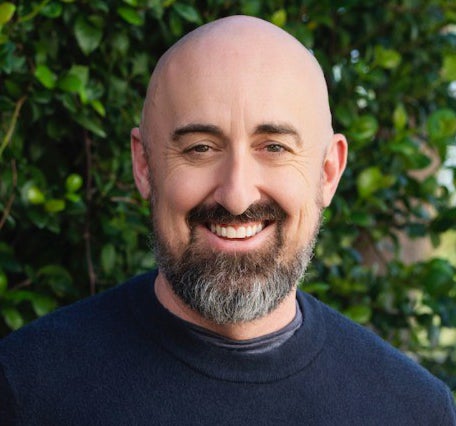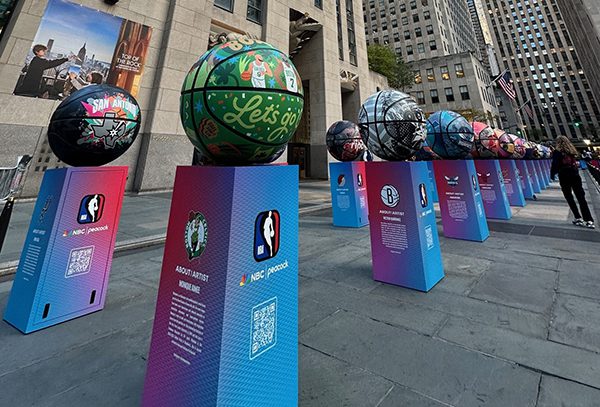Airlines and hotels embrace CRM in an effort to retain business travelers
TIRED OF BEING SHOVED AROUND at airports and suffering indifferent hotel service? Cheer up. All you have to do is travel more often.
That’s because hotels and airlines are spending millions of dollars to find out what frequent business travelers like and don’t like, and then acting on this information. Retention is now the No. 1 priority in the $257-billion-a-year business travel market.
Why?
For one thing, the high-flying economy is starting to falter, and travel budgets are likely to be cut.
Another factor is market glut. In the hotel industry, supply is up and demand is flat. So “you have to appeal to these customers in a more relevant way than [before],” says Jennifer Hoffman-Jones, brand marketing manager for Embassy Suites Hotels, Memphis, TN.
And finally, flyers are demanding more attention. “Business travelers no longer want to be part of the cattle call,” says Mike Cust, vice president of brand management for Carlson Marketing Group. “They want and expect to be treated as individuals with individual needs.”
Northwest Airlines is working hard to understand the preferences and interests of big spenders, and wants to increase its share of the $83.2 billion market for business air travel.
The airline recently redesigned its 20-million-member World Perks database. The multimillion-dollar upgrade transformed an inflexible, strictly operational database into one with rich data and vast flexibility, says Russ Hinckley, managing director of Northwest’s frequent flyer program World Perks.
Northwest, which had previously captured only miles traveled, now fills each traveler’s record with every detail of a transaction, and enhances this data with overlays from outside vendors and information provided by customers. “If we ask the right questions, we’ll get a pretty good response,” Hinckley asserts.
As part of this effort, the firm recently asked its most valuable customers – the Elite tier – to supply their e-mail addresses so that it could better communicate with them.
Last November, the airline began a direct mail campaign targeting 600,000 Elite members and other very frequent flyers. The mailing requested recipients’ online addresses and permission to send promotional e-mail. As an incentive, members were offered 1,000 bonus miles, and Elite members were offered an added bonus – a chance to win two free round-trip business-class tickets to Europe.
The promotion was also featured on the company’s Web site and in an article in the December issue. Members who dialed the firm’s 800 number heard a prerecorded message about it.
The result? An increase of 38% in the overall World Perks members agreeing to receive such promotions; a 48% boost among Elite members as a whole; and a 65% hike in the Platinum, or highest level, membership tier among the Elites, says Michael Nicholson, Northwest’s e-commerce marketing manager.
Moreover, it’s now easier for Northwest to communicate with members about upgrades and other perks – in fact, it’ll now be done automatically. “Most times they find out about the upgrade when they get to the airport,” Hinckley says. “We want to make sure Gold and Platinum Elite members, in particular, [know] that their upgrading capability will work.”
This enhanced database will also allow the airline to conduct ongoing studies to define discrete customer segments, to understand the unique characteristics of its most valuable members, and to personalize communications, Hinckley asserts.
Embassy Suites The same trends are under way at travel destinations. Embassy Suites Hotels raised its corporate travel marketing budget by 75% in 2000, and is expected to hike it another 15% this year. Most of it will go into retention marketing, according to Hoffman-Jones. Also, the increases are incremental and do not divert dollars from the leisure traveler or less frequent traveler. “We don’t rob Peter to pay Paul,” she says. “We’re not forsaking one of our key targets to focus on another.”
As part of the effort, the chain upped the number of DM campaigns to its corporate travelers from the one or two sent in 1999 to five to seven in 2000. Among the communications is an AT&T calling card with 30 free minutes tucked into a holiday card as a “thank you.”
Travel Profile But travel marketers face several challenges, one of which is pinning down the profile of the frequent business flyer. “When you base the profile on miles,” notes Northwest’s Hinckley, “the volatility in that category is huge because people can be generating [them] in so many ways.”
In general, experts say, the business traveler tends to be a male, age 35 to 54, earning $75,000 or more a year working in a professional or managerial position. But women are also traveling frequently. At Embassy Suites, the mix is now about 60% male and 40% female.
Another challenge is getting the customers in the first place, which often requires massive spending. Virgin Airways will advertise in 18 magazines this year, including Forbes, Fortune and Time. In many cases, the agreement gives Virgin access to the magazine’s subscriber file for marketing purposes, says John Riordan, vice president of sales and marketing for Virgin. The airline conducts about four direct mail prospecting efforts annually, ranging in size from under 5,000 pieces to more than 1 million.
Hotels and airlines also have to find marketing partners who can help them reach new customers and provide new benefits. Hilton Hotels, which owns Embassy Suites, has implemented the Hilton HHonors guest reward program. It maintains relationships with 55 airline partners, numerous car rental and credit card companies, including Citibank. According to Mary Beth Parks, vice president of marketing for Hilton HHonors Worldwide, Beverly Hills, CA, the hotel engages in reciprocal prospecting and co-marketing efforts that are more personalized and targeted.
American Express, for example, lasers a special message from Hilton on selected customers’ monthly statements. The messages are frequently based on individual characteristics and preferences, Parks says.
When planning loyalty strategies, an emphasis is also being placed on improving the customer satisfaction level of retention programs by educating people with instrumental roles or key contact with the business traveler. This includes channel partners and employees, remarks Carlson’s Mike Cust. “If the corporations don’t bring in all the people who create touch points for the business traveler, they will lose that individual to a competitor,” he adds.
Carlson designed Amtrak’s loyalty program. A massive training initiative was undertaken before the rollout last November, says Tom Madden, the firm’s director of account development.
Customers were educated through a layered campaign that included direct mail, point-of-purchase displays and signs in key train stations. Amtrak’s effort also consisted of parties and events, and promotions at its Web site.
Channel partners, including travel agents and Amtrak’s corporate sales department, received training and access to an 800 number for assistance and reference cards to help answer business traveler’s questions, Madden says. The program was promoted heavily in the Northeast, Northwest and Southwest.
“It’s more than just a direct marketing or database management initiative,” Cust explains. “It brings together all the marketing initiatives.”
The bar has also risen on the sheer size of rewards and incentives offered to the most lucrative travelers. For example, Virgin’s top business travelers are invited to trade in 1 million miles for a week’s stay on company owner Richard Branson’s private island in the Virgin Islands.
If the traveler prefers music, Northwest holds several events of interest. And Daryl Hall and John Oates recently performed in Minneapolis for some 2,000 HHonors members.
“You can divine your database down to the guy who winks at 5:30 on a Tuesday morning,” says Virgin Airway’s Riordan. “But you can win with the big things without getting into real database plundering.”



